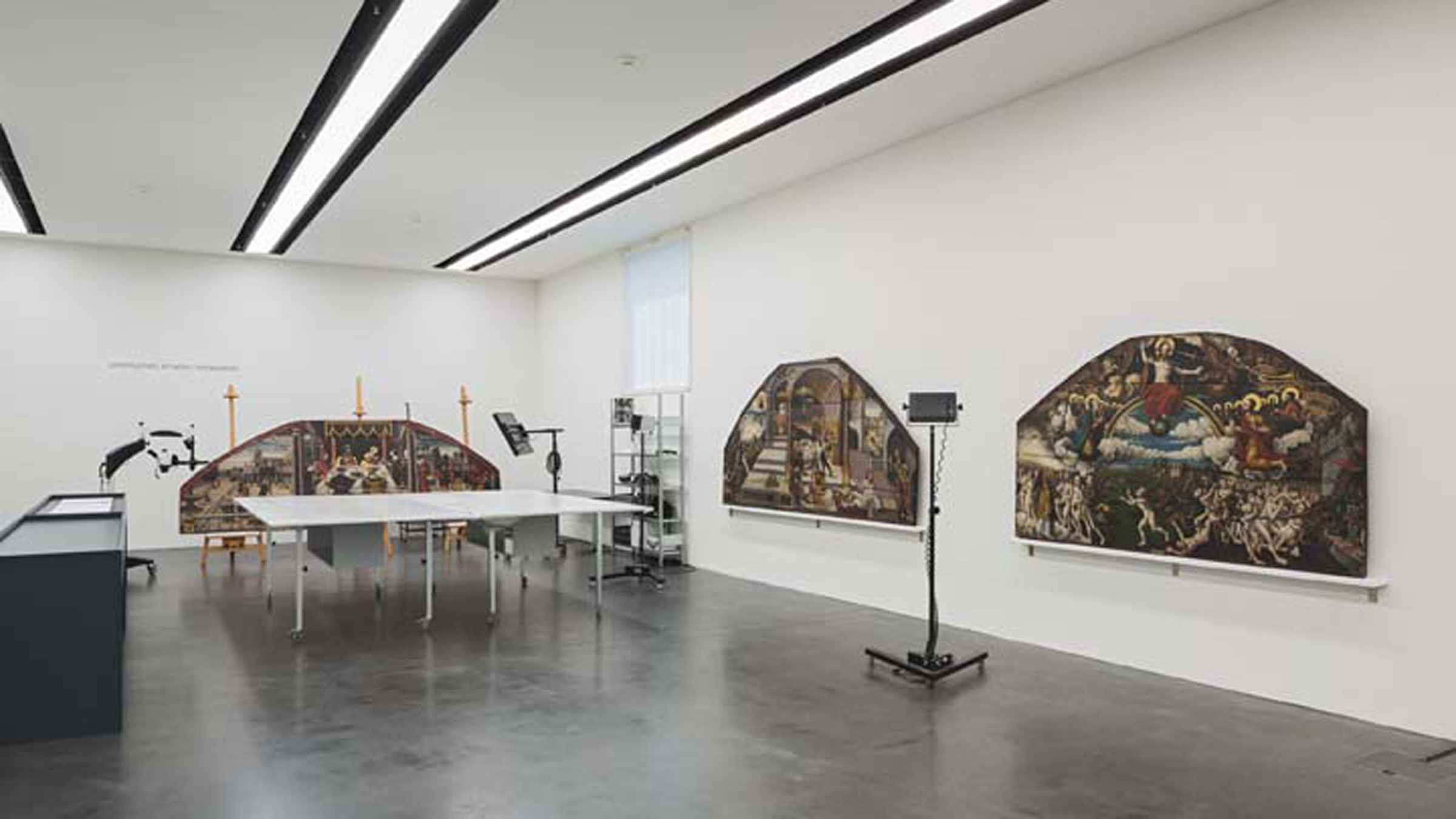Martin Moser (ca.1500-1568)
Öffentliche Restaurierung
At the center of the exhibition is the public restoration of three monumental wooden panels that the artist Martin Moser produced in 1557 for the house chapel of the Lucerne Pfyffer-Cloos family. The paintings, from the collection of the Historischer Verein Znetralschweiz, are among the most important works in the collection of Kunstmuseum Luzern. Visitors can follow the whole restoration process. Between Wednesdays and Fridays, the restorers can be seen engaging in their conservation work. Every Thursday at about 4 pm they will be happy to inform an interested public about the progress of their work and how they go about it.
The exhibition continues with an account of the origins of the paintings and their cultural context in 16h-century Lucerne. For example, the artist Martin Moser comes back to life in an audio station, and talks about how he was forced to leave Zwingli’s Zürich. During the Reformation, paintings were forbidden there, making it impossible for local artists to go on making their living. Lucerne, on the other hand, was not only informed by the counter-reformation, it was at the same time developing into a flourishing commercial city whose economic boom encouraged the production of art. Like many other artists, Moser found a new area of activity in Lucerne: he worked, for example, on the painting program of the Hofbrücke. Influential patricians also had their homes artistically decorated. As one of the most powerful Lucerne families, Jost Pfyffer, who commissioned Martin Moser’s panels, also held the senior political office of Schultheiss, or Sheriff. His social position is reflected in his imposing townhouse at Weinmarkt 5 in Lucerne’s old city. In the exhibition, a model clearly demonstrates the iconographic connection between the frescoes and the large-scale paintings from the chapel. Overall, the paintings take as their subject-matter the individual’s relationship with his family, with his fellow man and with God. Visitors can see what is shown in detail on the three wooden panels Das Jüngste Gericht, Der reiche Prasser und der arme Lazarus and Gastmahl des Herodes. Enthauptung de Hl. Johannes (The Day of Judgement, The Rich Wastrel and Poor Lazarus, and Herod’s Feast: Beheading of St. John) on a computer station in the exhibition.
A collaboration with Historischer Verein Zentralschweiz
The exhibition is supported by Luzerner Kantonalbank, Josef Müller Stiftung Muri.




